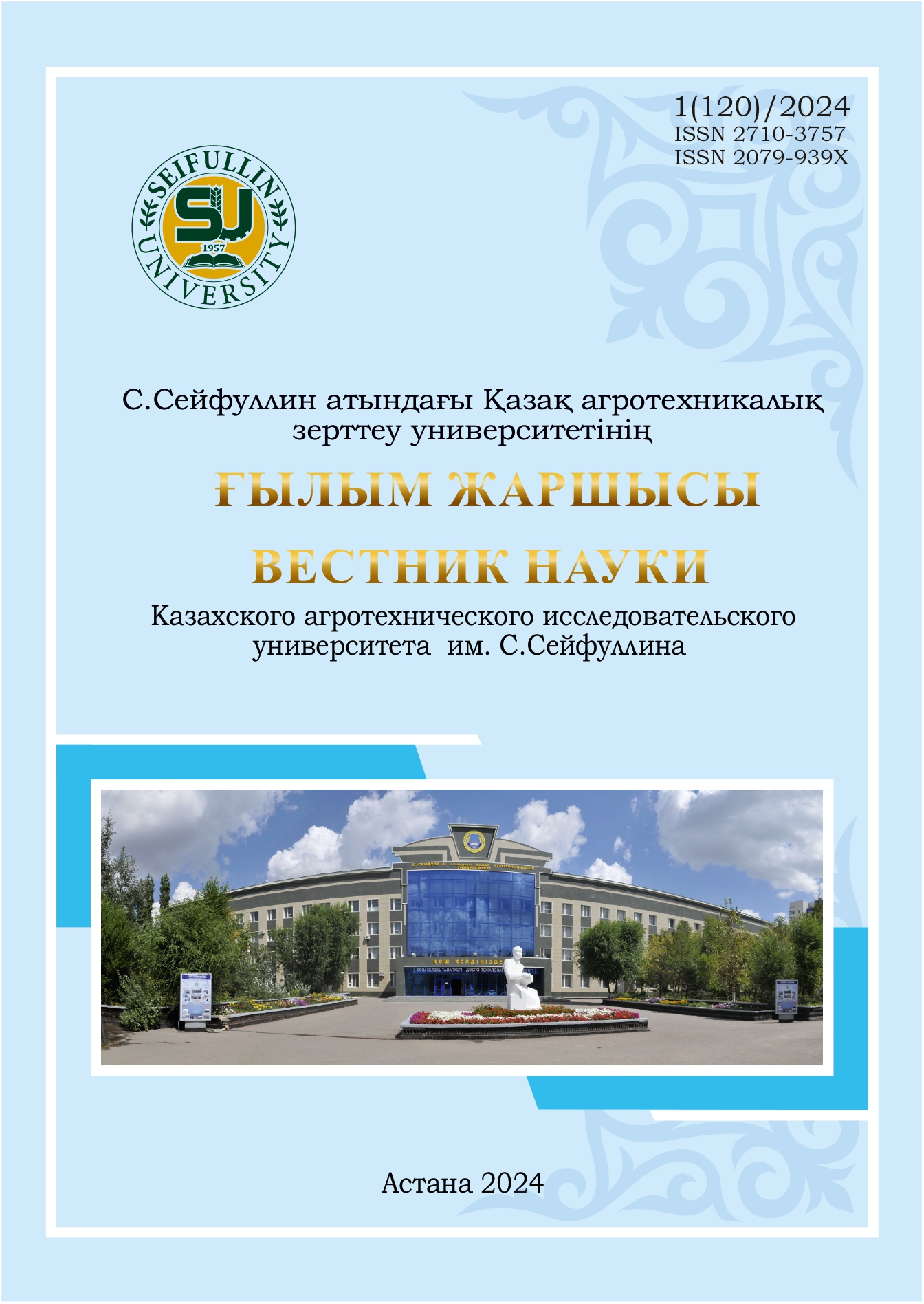STUDY OF PRESERVATION OF FOREST CROPS ON FORESTABLE SOILS IN THE GREEN ZONE OF ASTANA CITY
DOI:
https://doi.org/10.51452/kazatu.2024.1(120).1593Keywords:
forest cultures; NDVI; condition; forest soils; green zone; fluctuating asymmetry; remote sensing of the Earth.Abstract
The relevance of the research lies in determining the condition of woody and shrubby plants in the green zone around the city of Astana, including using remote sensing of the Earth (remote sensing). The objects of research were forest crops on suitable soils, which were examined according to generally accepted methods. In the test areas, a continuous re-enumeration of trees was carried out with a record of the condition of each tree. The remote sensing data classification algorithm was based on machine learning using the "Random forest" method. It was revealed that Ulmus laevis Pall. crops were the most adapted on forest-suitable soils, further, as conservation decreased: Acer negindo L., Populus balsamifera L., Salix acutifolia Willd., Betula penndula Roth, Elaeognus angustifolia L., Pinus sylvestris L. The area of healthy plantations in all categories of soils in the green zone is 41%, weakened – 37% and 22% of those who die. As a result of studying the fluctuating asymmetry of the leaves of Betula penndula Roth, it was found that plantations are negatively affected by soil and climatic conditions, as a result of which the state of Betula penndula Roth forest crops has reached a critical point. The practical significance of this study is to confirm the need to develop forestry measures to preserve the plantations of the green zone of Astana.

